In the 21st Century, everybody can identify a California condor. It's a very large, orange-headed vulture, with a big number on its wing. Some of the numbers are different colors, perhaps plumage characteristics denoting sex or age. A few have radio-like growths on their upper wing surfaces, perhaps a deformity associated with extreme age (or the effects of chemical pesticides?).
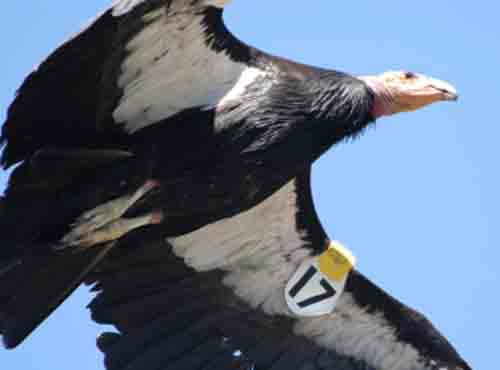
But before the early 20th Century, the only people who knew what a condor looked like were those very few who had been fortunate enough to have seen one. Everyone else had to guess. There was a lot of guessing going on, but, like the sightless man trying to describe an elephant by feeling the various parts of its body, most of the guesses weren't very good.
The first attempt to show the world what the California condor looked like was published in Shaw's and Nodder's Vivarium Naturae ("Naturalist's Miscellany") in 1797.
Not very good, you say? Well, perhaps they can be forgiven considering what they had to work with: one specimen collected in California in 1792 or 1794, that had been aboard a sailing ship for at least one year, and perhaps two, almost certainly stored in a barrel of alcohol, and delivered to the British Museum in 1796. It probably looked even less condor-like when Shaw got it than it looks today.
As more specimens reached museums in Europe and America, more attempts were made at a realistic condor. Some results were better than others, but most of them still didn't capture the proportions correctly.
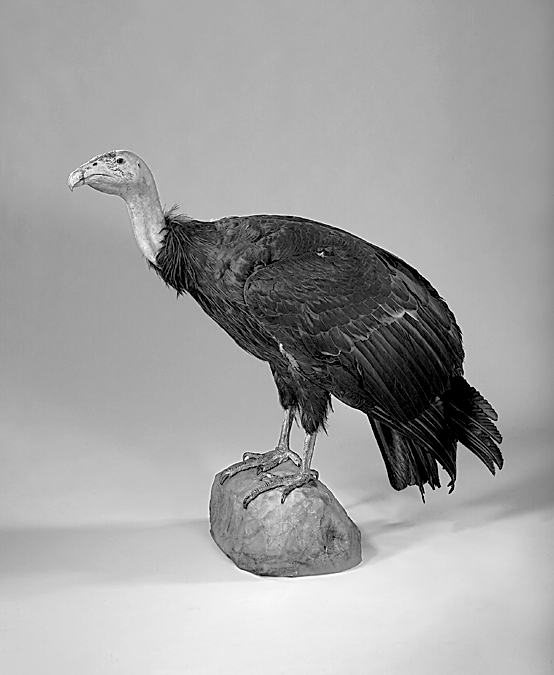
The artists were having their turns at portraying the condor, also, sometimes with better success than the taxidermists. Although John James Audubon had never seen a live condor, and did his painting from museum material, his "California Turkey-vulture" of the late 1830s certainly exhibited the spirit of the real bird.
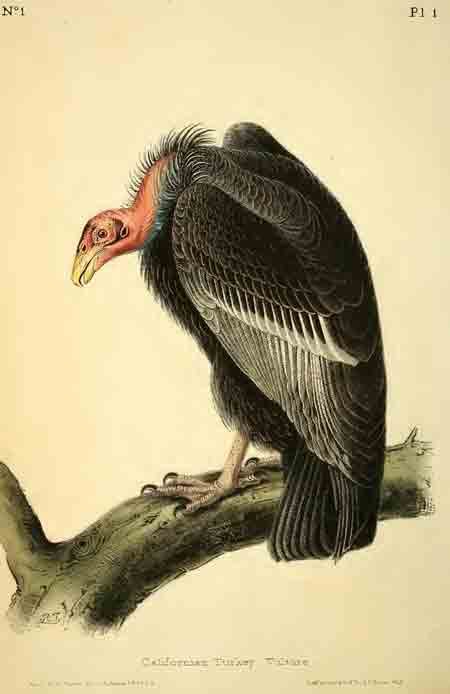
Charles Cory's depiction from the early 1880s was more typical of the romantic treatment given to the species and its supposed habitat at that time. Cory's painting was done from specimens in his collection, but he probably had never seen a living condor.
The first portrait of a live California condor was made in 1866, drawn from a young bird procured from a nest in Monterey County, California, and shipped to the Zoological Society of London. The condor died two years later, so the adult plumage wasn't portrayed. It was the first time that the public (still a rather limited one) got to see an accurate depiction of the body proportions of the species. The drawing was widely reproduced in publications in both Europe and the United States.
The American public was still without good access to California condor pictures and information, but the news media were catching on to the story of the giant American vulture. Stories began to appear regularly in newspapers and magazines. Unfortunately, the stories were usually pretty inaccurate, and the accompanying pictures did nothing to teach Americans the right things about condors. Regularly featured were drawings of condors flying with "prey" clutched in their "talons."
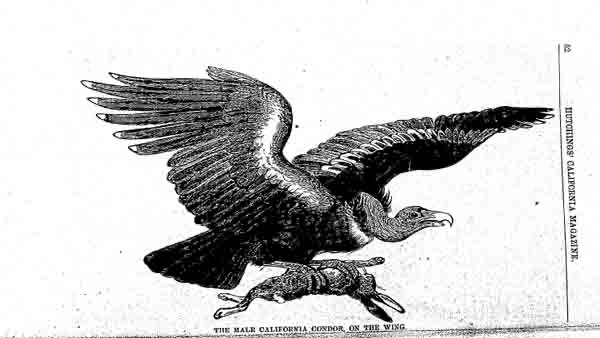
There were also dramatic stories of fierce vultures mounting near-deadly attacks against visitors to their nest caves.
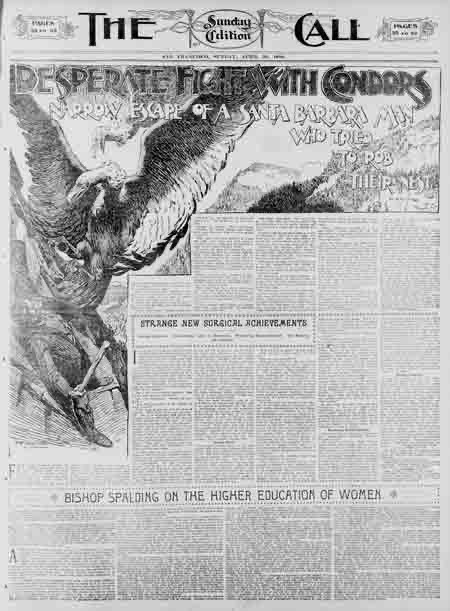
The "desperate fight" articles were sometimes based on actual events. The one above, for instance, was based on the actual taking of a condor's egg, and -- except for the "desperate fight" part -- was pretty accurate concerning the people and place involved. But there were also pure fakes, such as newpaperman Harry Dunn's series of stories on collecting a condor egg (he never did), and his 1904 claim to have taken the first photographs of California condors in the wild.
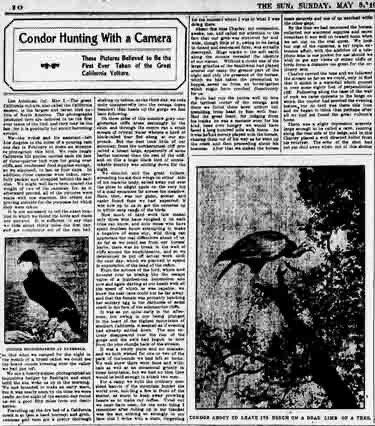
Dunn's article claimed to show "photos believed to be the first ever taken of the Great California Vulture." A closer look shows that the "condor photographed at daybreak" is a very poorly mounted taxidermy specimen (in the collection of Frean Morcom);
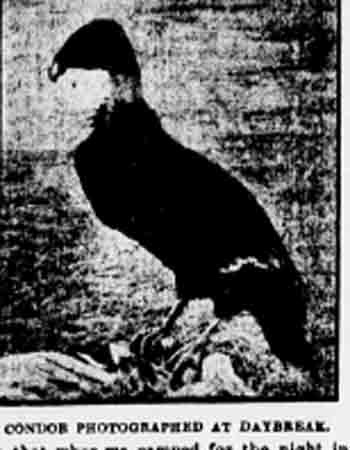
and the "condor about to leave its perch" appears to be a drawing, not even a stuffed bird.
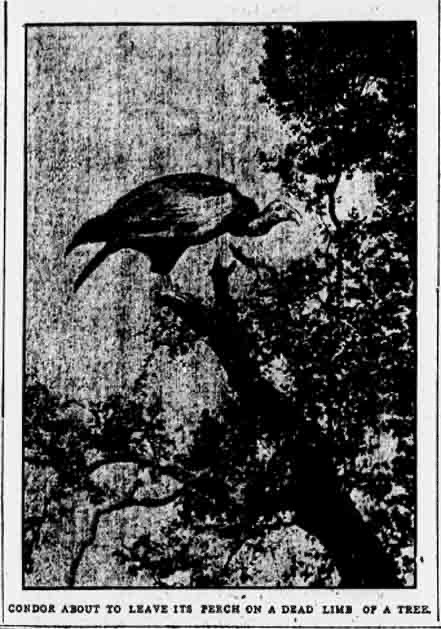
* * *
By the late 1890s, photography by amateurs was becoming popular, and some condor pictures were taken. The earliest I found, ones of Frank Holmes and E. B. Towne, showed dead condors, and probably were not seen by anyone but family and friends for many years.
It was in 1897 that a small segment of the American population - those who read relatively obscure ornithology and oology magazines - got to see photos of a living California condor. Granted, it was a captive bird, and not an adult, but still, there it was.
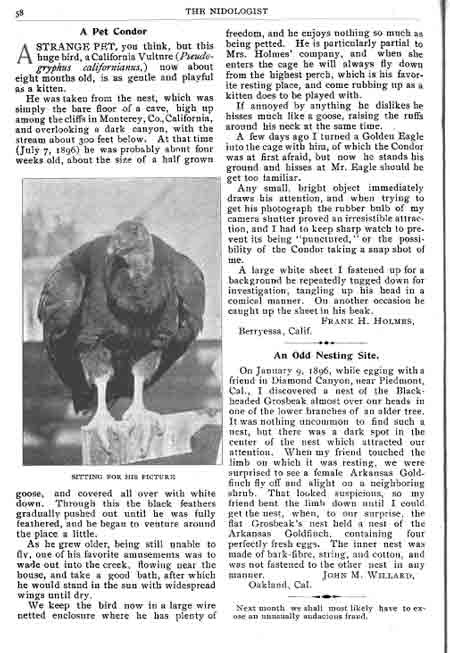
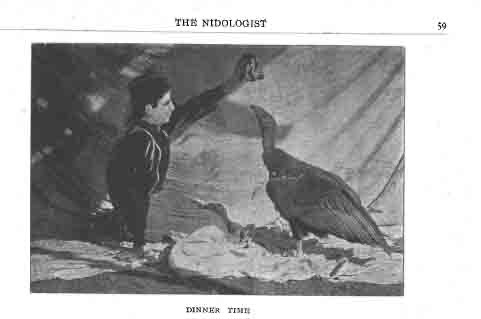
* * *
The 19th Century was past, and there was still no photograph of a living condor in the wild. Enter William L. Finley and Herman T. Bohlman. Since 1900, the pair had been presenting the public with remarkable photos of wildlife in its native habitats. In 1906, learning of a nesting pair of California condors in Eaton Canyon near Pasadena, they set out to be the first to document the home life of the giant vultures. To say their efforts were successful is to minimize the results. Some of the photographs they took stand up even today with some of the best ever taken of condors. In the following ten years, their condor photos and stories appeared in books, magazines, newspapers, and ornithological journals worldwide, and were included in personal presentations that the photographers gave. The California condor was suddenly a public celebrity.
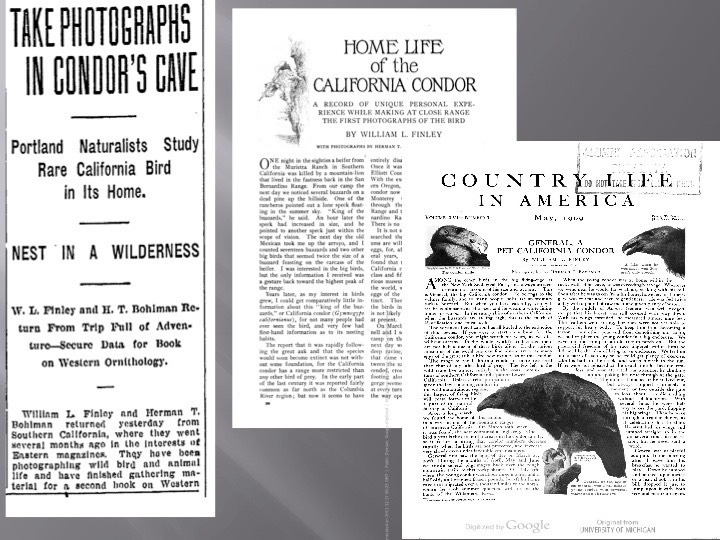
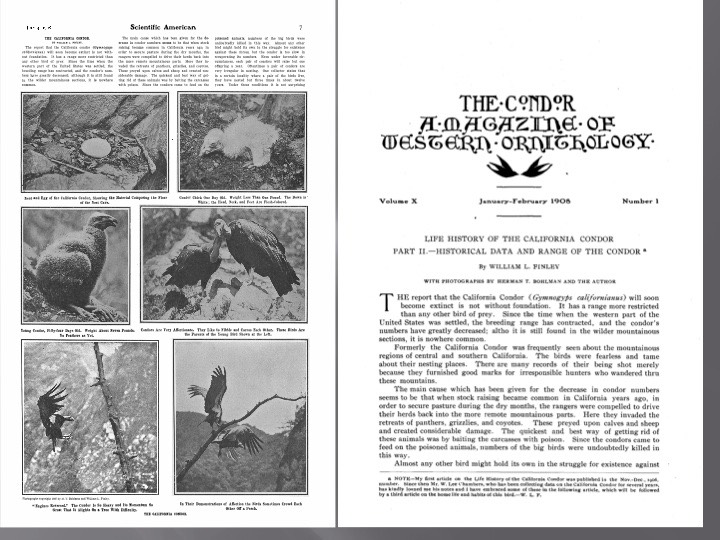
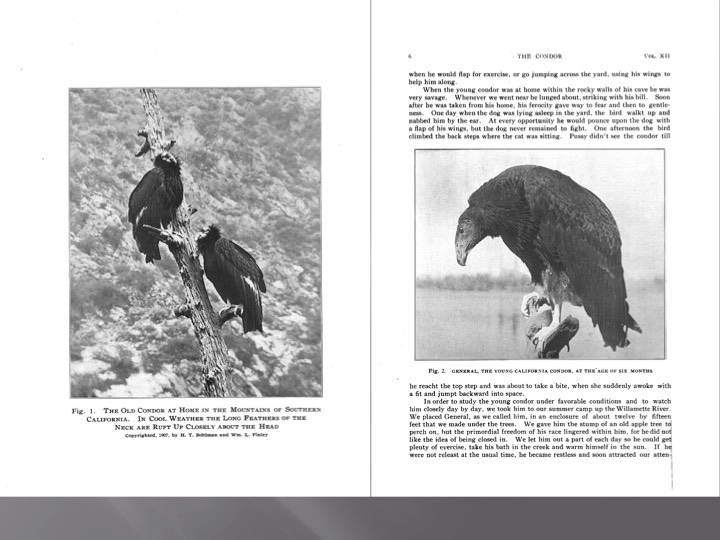
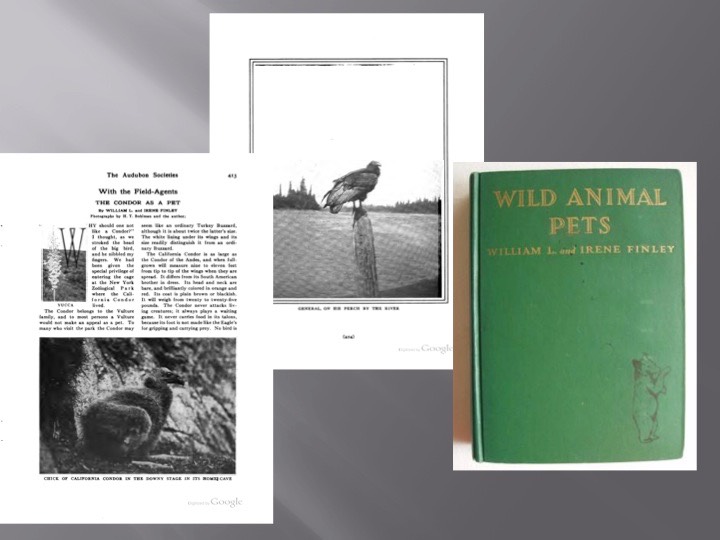
One might think that the Finley-Bohlman efforts would have helped spawn other condor photographic endeavers. In fact, very few condor photos were taken in the next 40 years. When National Audubon Society published Carl Koford's classic monograph on condors in 1953 -- detailing Carl's studies in the 1930s and 1940s, when he saw more condors up close than anyone had ever seen before -- a quarter of the condor photographs used to illustrate the report were those of Finley and Bohlman.
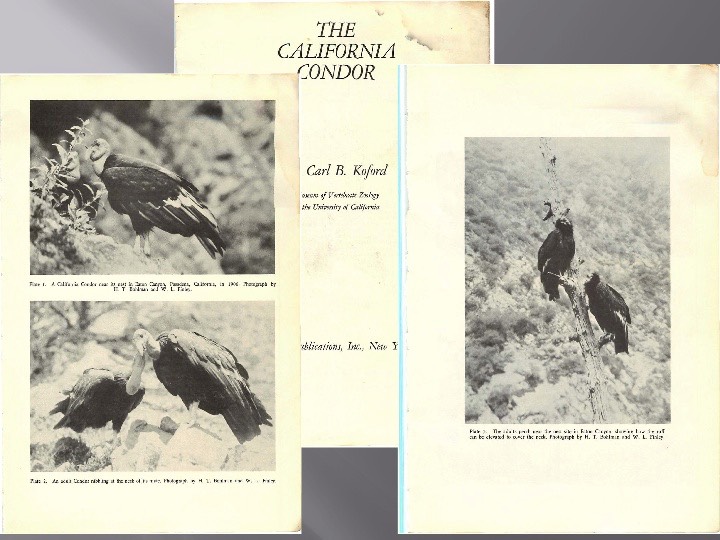
Leave a Comment: symbios@condortales.com